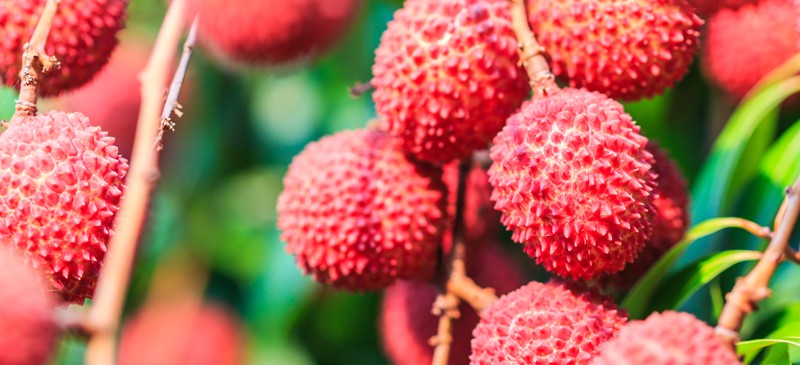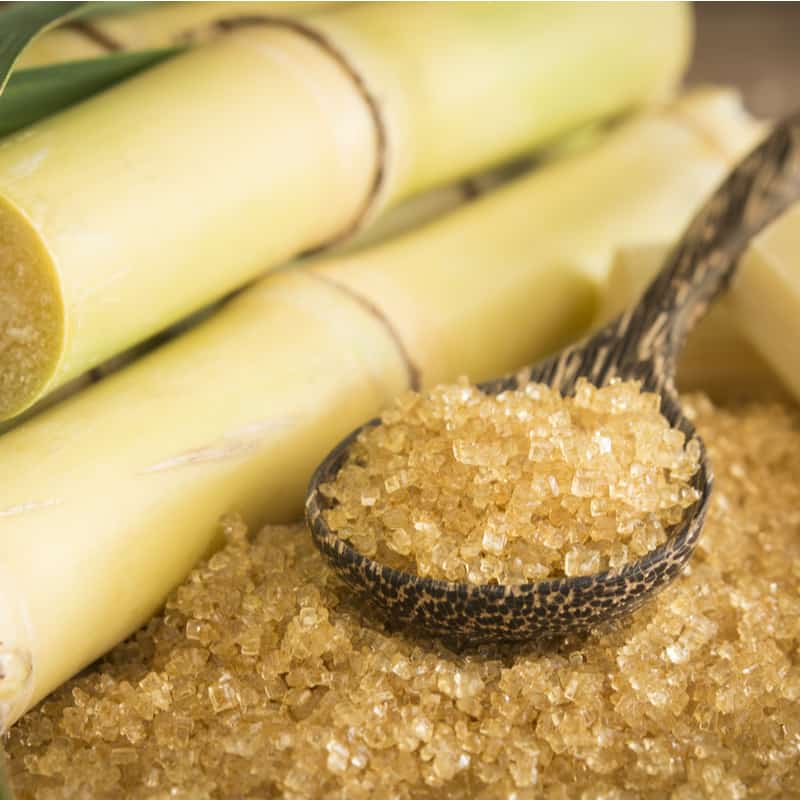This Dr. Axe content is medically reviewed or fact checked to ensure factually accurate information.
With strict editorial sourcing guidelines, we only link to academic research institutions, reputable media sites and, when research is available, medically peer-reviewed studies. Note that the numbers in parentheses (1, 2, etc.) are clickable links to these studies.
The information in our articles is NOT intended to replace a one-on-one relationship with a qualified health care professional and is not intended as medical advice.
This article is based on scientific evidence, written by experts and fact checked by our trained editorial staff. Note that the numbers in parentheses (1, 2, etc.) are clickable links to medically peer-reviewed studies.
Our team includes licensed nutritionists and dietitians, certified health education specialists, as well as certified strength and conditioning specialists, personal trainers and corrective exercise specialists. Our team aims to be not only thorough with its research, but also objective and unbiased.
The information in our articles is NOT intended to replace a one-on-one relationship with a qualified health care professional and is not intended as medical advice.
Lychee: Antioxidant Powerhouse or Dangerous for Children?
January 2, 2019

With its unique appearance, one-of-a-kind flavor and incredible nutrient profile, lychee stands out alongside other tropical fruits like dragon fruit, mangosteen and tamarind fruit as a true superstar ingredient. Not only is it packed with antioxidants and micronutrients, but it’s also rich in several powerful key compounds that can work wonders when it comes to your health.
So what exactly is a lychee, where can you find it and why should you consider adding it into your diet? Let’s take a closer look.
What Is a Lychee?
Lychee, also known as lichi or litchi, is a tropical tree that belongs to the soapberry family. It is related to other plants, such as rambutan, ackee, longan and guarana. The lychee tree can grow anywhere between 50–90 feet tall and produces small, fleshy fruit with a rough pink exterior, white flesh and a dark seed.
Although the fruit is native to China, it can now be found around the globe in fresh and canned form. It is used in everything from main dishes to desserts, drinks and appetizers alike.
In addition to its versatility and distinct perfume-like flavor, this tropical fruit is also jam-packed with antioxidants, vitamins and minerals, making it a great addition to a healthy, well-rounded diet.
Nutrition Facts
Lychee is highly nutritious, cramming a good amount of fiber and vitamin C into each and every serving — as well as other micronutrients, such as copper, vitamin B6 and potassium.
One cup (about 190 grams) of raw lychee fruit contains approximately:
- 125 calories
- 31.4 grams carbohydrates
- 1.6 grams protein
- 0.8 gram fat
- 2.5 grams dietary fiber
- 136 milligrams vitamin C (226 percent DV)
- 0.3 milligram copper (14 percent DV)
- 0.2 milligram vitamin B6 (10 percent DV)
- 325 milligrams potassium (9 percent DV)
- 0.1 milligram riboflavin (7 percent DV)
- 26.6 micrograms folate (7 percent DV)
- 1.1 milligrams niacin (6 percent DV)
- 58.9 milligrams phosphorus (6 percent DV)
- 19 milligrams magnesium (5 percent DV)
- 0.1 milligram manganese (5 percent DV)
In addition to the nutrients listed above, lychee also contains a small amount of iron, selenium, zinc and calcium.
Health Benefits
1. Enhances Immune Function
Lychee is loaded with vitamin C, an important water-soluble vitamin that doubles as an antioxidant to fight free radical damage and optimize immune health. For this reason, getting enough vitamin C in your diet is especially important when it comes to warding off infections and promoting overall heath during times of sickness.
Vitamin C works by protecting the immune system, reducing the severity of allergic reactions, and fighting off illness and infection. Interestingly enough, a 2006 study published in the Annals of Nutrition & Metabolism found that meeting the daily recommended intake of vitamin C was effective at reducing symptoms and shortening the duration of certain respiratory infections like the common cold.
2. Packed with Antioxidants
Lychee is a great source of antioxidants, flavonoids and anthocyanins, including varieties such as gallic acid, chrysanthemin, antirrhinin and oenin. It’s also rich in ascorbic acid, providing 226 percent of the vitamin C that you need for the entire day in a single one-cup serving.
Antioxidants are important compounds that help fight free radicals and prevent oxidative damage to the cells. Plus, research shows that antioxidants may also support long-term health and can aid in the prevention of chronic conditions, such as cancer, diabetes and heart disease.
3. Relieves Inflammation
Acute inflammation is an essential part of the immune process designed to help protect the body against foreign invaders and reduce the risk of illness and infection. However, sustaining high levels of inflammation in the long term is thought to contribute to the development of chronic disease, including serious conditions and autoimmune disorders, such as rheumatoid arthritis, inflammatory bowel disease and leaky gut syndrome.
Studies show that lychee can help control inflammation to support overall health. According to an in vitro study published in the journal PLoS One, a flavonol-rich extract of lychee fruit was effective at suppressing the expression of certain genes involved in the inflammatory process.
This fruit is also high in antioxidants, which are compounds that can help reduce inflammation and prevent the buildup of free radicals in the body.
4. Supports Blood Sugar Control
Research suggests that adding lychee to your diet may help support blood sugar control to help you maintain normal blood sugar levels in the long term. This is because it is also a great source of fiber, with 2.5 grams in a one-cup serving. Fiber can help stabilize blood sugar levels by slowing the absorption of sugar in the bloodstream to provide cells with long-lasting energy.
One animal study conducted by the National Cheng Kung University in Taiwan also reported that lychee extract could help decrease insulin resistance in mice to support healthy blood sugar levels. Insulin resistance can decrease the body’s ability to use insulin, the hormone responsible for transporting sugar from the blood to the tissues.
This can lead to increased blood sugar over time. Combating insulin resistance by consuming fiber can improve your body’s ability to use insulin efficiently to help manage blood sugar levels.
5. Boosts Brain Function
Although current research is mostly limited to animal studies, some evidence suggests that lychee can enhance brain function and protect the cells against injury. For example, one animal model out of China showed that certain compounds found in the seeds of the fruit were able to improve cognitive function and prevent injury to the neurons in rats with Alzheimer’s disease.
Similarly, another study showed that lychee seed extract exhibited neuroprotective effects on rats with impaired cognitive function.
6. Contains Antiviral Properties
In addition to the antioxidant, anti-inflammatory effects of this tropical fruit, some research shows that it may possess powerful antiviral properties as well.
In fact, one in vitro study published in the journal Molecular Vision showed that lychee flower extract was effective at blocking the growth and spread of herpes simplex virus in corneal cells.
7. May Fight Cancer Cells
Some in vitro studies have found that lychee could bring some big benefits when it comes to cancer prevention. According to a 2017 review published in Nutrients, the pulp, peel and seed of the lychee fruit all contain potent compounds that can inhibit tumor formation and block cancer cell growth.
However, it’s important to remember that these studies look at the effects of highly concentrated compounds found within lychee when administered to isolated cancer cells in a laboratory. Additional research is needed to evaluate how this fruit may affect cancer growth in humans when consumed as part of a healthy diet.
Uses
According to Traditional Chinese Medicine, the fruit is believed to have warming properties. It can help nourish the blood, strengthen the digestive system, increase appetite and keep the spleen healthy. However, because of its warming properties, it’s advised to keep lychee consumption in moderation to reduce the risk of adverse effects on health.
Meanwhile, on an Ayurvedic diet, lychees are used to improve digestive health, support the reproductive system and promote regularity. They are also thought to reduce inflammation and help naturally treat issues like nerve pain.
Wondering where to buy lychee? Lychees can be found fresh at many specialty Asian markets or in canned form at most major grocery stores. Look for fresh lychees during mid-June to mid-July, which is when this delicious fruit reaches peak ripeness.
The lychee taste is often described as fragrant and mildly sweet with a bit of tartness. This makes it well-suited for a number of different dishes. The easiest way to enjoy lychee is to eat it is by simply peeling the fruit, removing the lychee nut from the middle and enjoying the fresh fruit as is.
You can also use the fruit to top off a vibrant salad, make a flavorful jam, or balance out a sweet and savory main course. Alternatively, you can try using the canned fruit or lychee juice to prepare desserts, smoothies and other beverages as well.
Lychee vs. Rambutan vs. Mangosteen
The lychee, rambutan and mangosteen are three of the most exotic and interesting fruits to hit supermarket shelves. Each is favored for its unique taste, texture and appearance. However, there are several differences that set apart these three fruits.
Rambutan, also sometimes called mamon chino, is a type of tropical fruit native to Indonesia that is closely related to the lychee. The name stems from the Malay-Indonesian word for “hair” because of the vibrant, hair-like spines that cover the skin of the fruit. There are many different cultivars of the fruit available, most of which are grown primarily in tropical regions of Asia. It contains a good amount of several important nutrients, including manganese, niacin and vitamin C, but in lower concentrations than the lychee fruit.
The mangosteen, meanwhile, is a fruit that grows mostly in tropical regions like Southeast Asia, India and Puerto Rico. It is believed to have originated in a group of islands in the Malay archipelago. This fruit has a deep purple rind and several sweet, juicy vesicles housed within. Like the lychee, it contains a high amount of fiber per cup, plus a modest amount of key nutrients, like vitamin C and magnesium.
Recipes
Looking for a few new ways for how to eat lychee and take advantage of its many health-promoting properties? Look no further! Here are a few delicious and nutritious ways to enjoy this flavorful fruit:
- Lychee Ice Cream
- Lychee, Coconut and Lime Popsicles
- Chicken and Lychee in Sweet and Sour Sauce
- Watermelon Lychee Smoothie
- Lychee Ceviche
Interesting Facts
The cultivation of the lychee fruit tree can be traced back to southern China, Malaysia and Vietnam around the year 1059 A.D. However, written records referencing the fruit date even further back, all the way to approximately 2000 B.C.
Historically, lychee was considered a delicacy in the Chinese Imperial Court and was in such high demand that there is said to have been a special high-speed courier service specifically designated for delivering fresh lychee from the Chinese province of Guangdong.
Today, it is commonly grown around Asia in countries like China, Vietnam, India and Thailand. However, due to its growing popularity, it can also be found in other areas, such as Australia, South Africa, Brazil and the United States. It’s also widely available in many supermarkets and specialty stores. It can be found fresh, canned or even dried all year-round.
Risks and Side Effects
Studies have found that consuming high amounts of unripe lychee fruit on an empty stomach could cause a condition called hypoglycemic encephalopathy in children, likely due to the presence of a compound called methylene cyclopropyl acetic acid found in the seeds of the fruit.
For this reason, it’s typically advised for children to keep lychee consumption in moderation and to eat after an evening meal to avoid dips in blood sugar levels that could contribute to symptoms.
Keep in mind that lychee is also a relatively high-sugar fruit and contains a good chunk of calories per serving. Plus, fruit canned in syrup may be even higher in sugar, so it’s important to keep intake under control to avoid adverse health effects like weight gain and high blood sugar.
Although rare, some people may also be allergic to lychee, especially if also allergic to latex, which could cause food allergy symptoms such as hives, itching, redness and swelling. If these or any other symptoms occur after eating lychees, discontinue consumption and talk to your doctor.
Final Thoughts
- What is lychee? Also known as litchi, this is a tropical tree that belongs to the soapberry family of plants and originally hails from Southeast Asia.
- The lychee tree produces a light red, fleshy fruit with a distinct perfume-like flavor and a host of important micronutrients.
- A few of the potential benefits of this fruit include enhanced immune function, reduced inflammation, better blood sugar control and increased brain function. It has also been shown to contain antiviral and cancer-fighting properties in some in vitro studies as well.
- It has a sweet yet tart flavor that works well in desserts, smoothies and main courses alike. It can even be enjoyed as is, fresh or paired with other fruits to make a delicious fruit salad with other ingredients like pineapple, melons or cranberries.
- Enjoy this tropical fruit in moderation as part of a healthy diet to maximize the potential health benefits and enjoy the wealth of nutrients that this tropical fruit has to offer.









